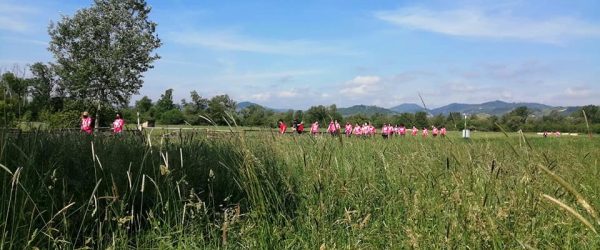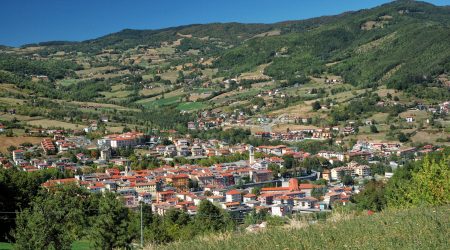Taro Park, Carrega Forest Park and the WWF Ghirardi Nature Reserve are unique places for outdoor activities, to discover the truest nature.
WWF oasis of ghirardi, nature reserve
The Reserve and the wider Oasis, protect a piece of the Apennines that seems to have survived time, enclosing within them most of the environments of the middle mountains.
In fact, various components fit into the mosaic: meadows, shrubs, oak groves, other mixed forests, rocks, gullies, river beds, ponds, pastures, moors.
This ecological diversity allows a concentration of animal and plant species higher than those of the surrounding areas, making the area particularly interesting from an environmental point of view.
The plant biodiversity of the Ghirardi is very high and not very homogeneous. The varied morphology of the area, characterized by the presence of calcareous or acidic soils, rocky or incoherent substrates, slopes with different exposures, create the premises for very different microclimates and habitats: it is possible to find species typical of cold climates, such as beech and gentian, and Mediterranean species, such as tree heather.
This variety of natural landscapes favors the development of a rich and interesting flora, starting with the 33 species of wild orchids, to which are added other precious plants.
As evidence of the forests of the past, there are large specimens of oak, oak and oak. The area is a safe haven for many animals, and also for them the environmental variety is a factor of diversification, so that, a few meters from the nest of the Woodcock is the tunnel dug by the Mediterranean Bee-eater. All this richness is framed by an enchanting landscape, which changes with the changing of the seasons, and which welcomes the visitor who wants to immerse himself in this kaleidoscope of rare habitats.
MONTE PRINZERA RESERVE
A dark rock among the soft hills of the middle Taro valley is the silhouette of Mount Prinzera, an ophiolitic outcrop with an original profile in the landscape of the middle Parma Apennines.
A relief of 736 meters on the ridge that separates the Taro and the Sporzana, with a harsh and wild appearance.
In addition to ophiolites, magmatic rocks from the depths of ancient oceans (age c. 200 m.a.), there are several alien sedimentary formations, including clays, flysch, marl and sandstone.
The vegetation cover is a very diverse mosaic of mixed forests, bushes, grasslands, wetland vegetation.
For reservations and visits Iat Fornovo Office 0525 2599: iatfornovo@gmail.com
TARO PARK
The Taro Park was established in 1991 and extends for about 3200 ha from Fornovo to Pontetaro.
The morphology of the riverbed is typical, it has intertwined channels due to the presence of river bars; on the gravel islets grow willows ripaioli and red willows.
The objective of safeguarding the vast riverbed and the surrounding areas has led to the promotion and implementation of interventions for the maintenance of biodiversity and sustainable development projects that improve the use of water for the benefit of the environment.
In addition to the enhancement of the environment, the Park is engaged in tourism promotion, in the organization of numerous cultural and themed events in scientific research.
Visitors are welcomed in the Corte di Giarola, home of the Taro Park, where they can take advantage of the Visitor Center, the Environmental Education Center, the Infopoint and expert guides.
PARK BOSCHI DI CARREGA
It is the first park established in Emilia Romagna, in 1982. It covers 1260 ha (2600 with the prepark) on the river terraces between the Taro and the Baganza and is managed by a consortium between the municipalities of Collecchio, Sala Baganza, Felino and Fornovo Taro and the Province of Parma.
The Park promotes information, education and conservation activities. The management offices are the Levati Visitor Center and the Casinetto Park Center. This place has been chosen by the Parma court, since the Farnese era, for holiday periods and hunting.
Visitors are offered historical, botanical and wildlife itineraries. In addition to the various events and thematic exhibitions , environmental education activities are also organized for schools.
There are routes that can be traveled freely every day and others that can be visited only on certain days with guided tours











